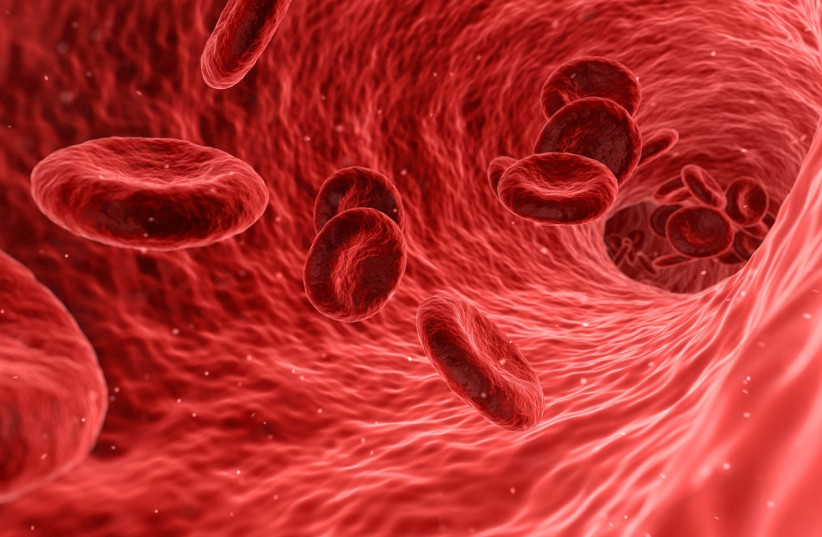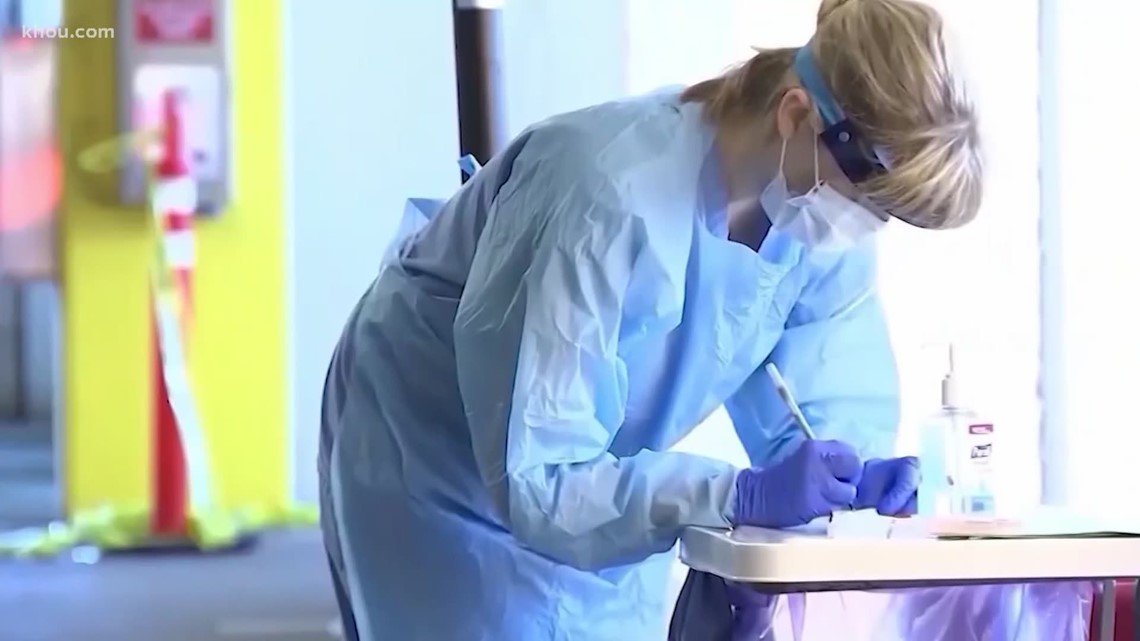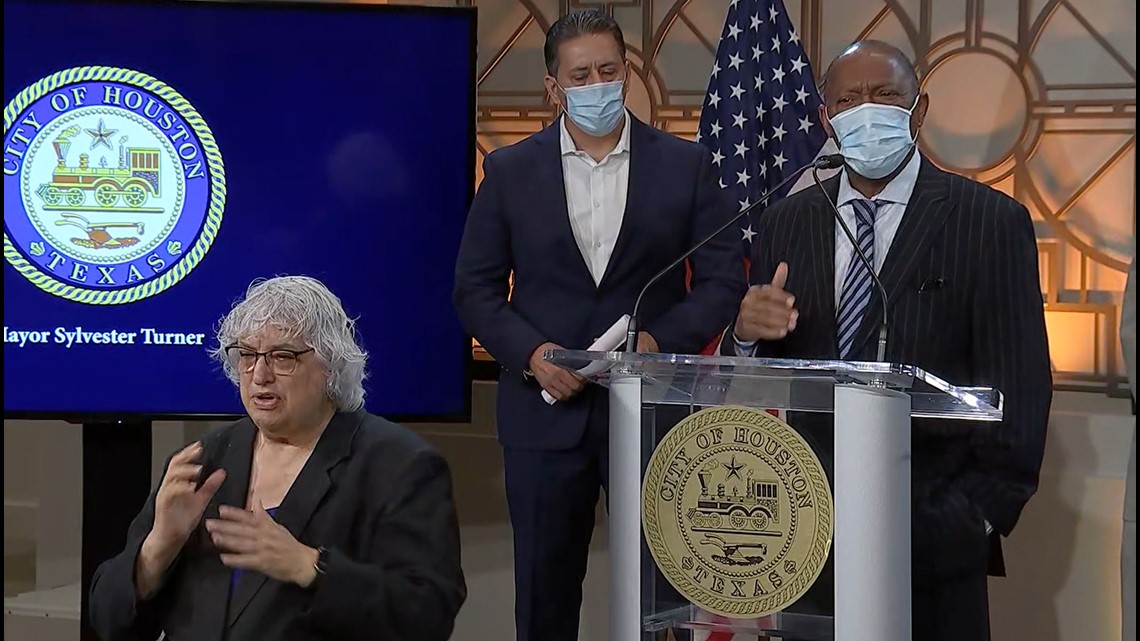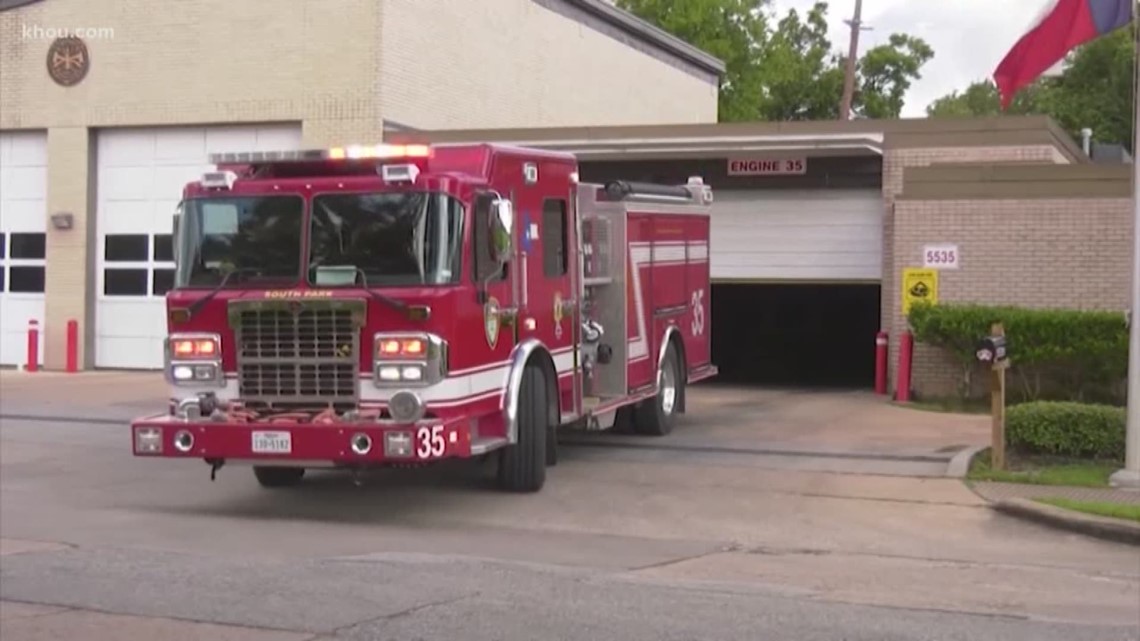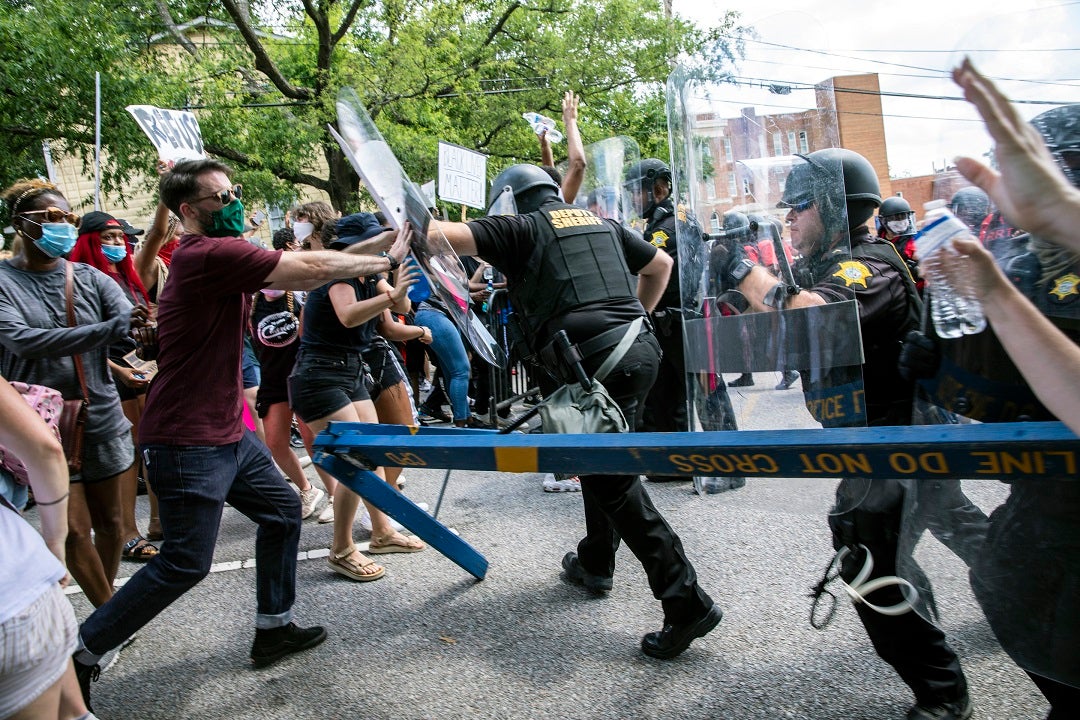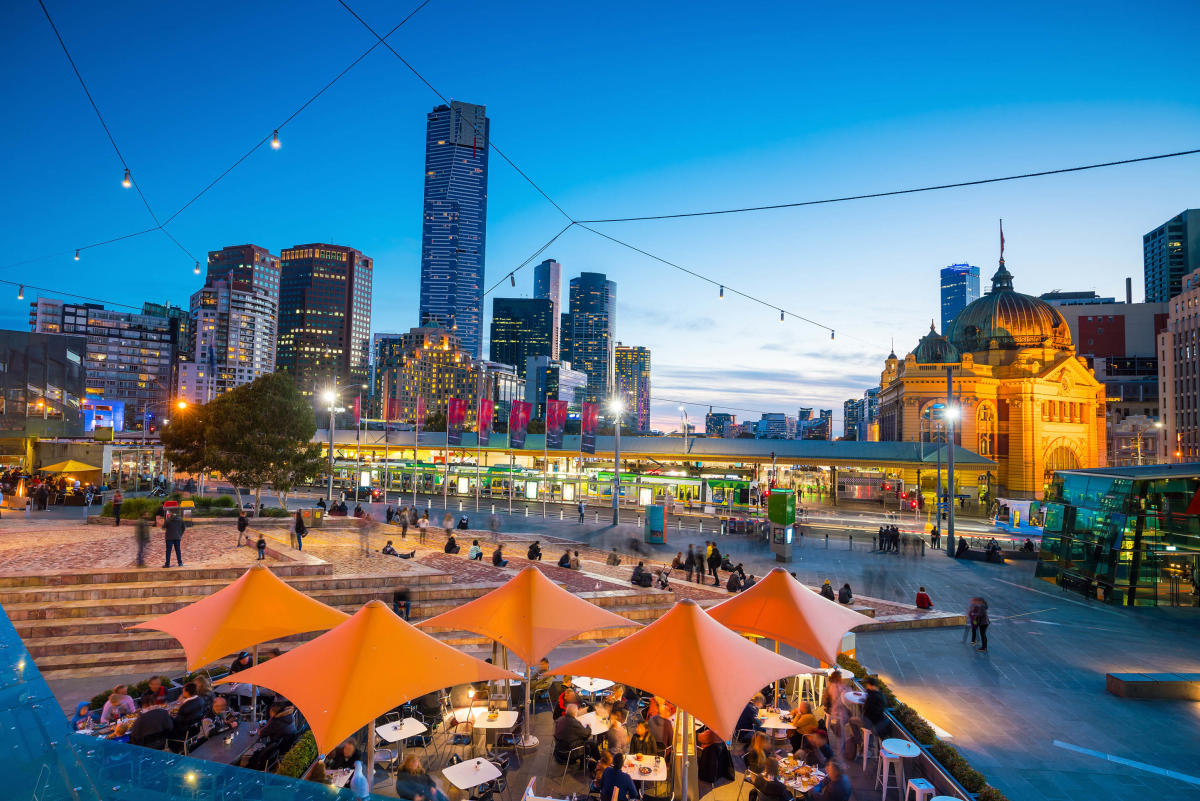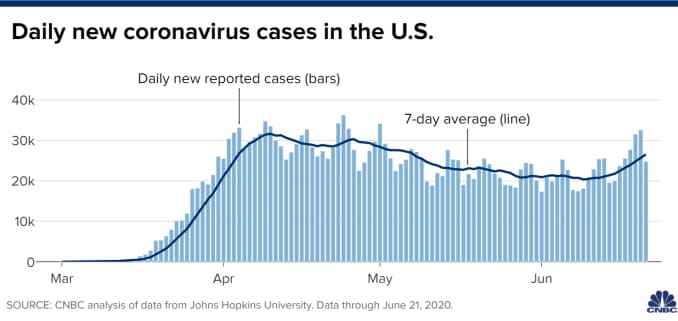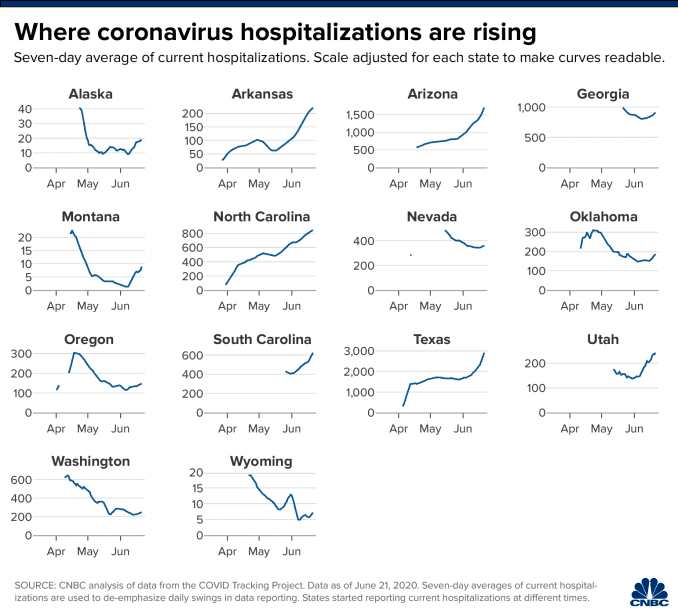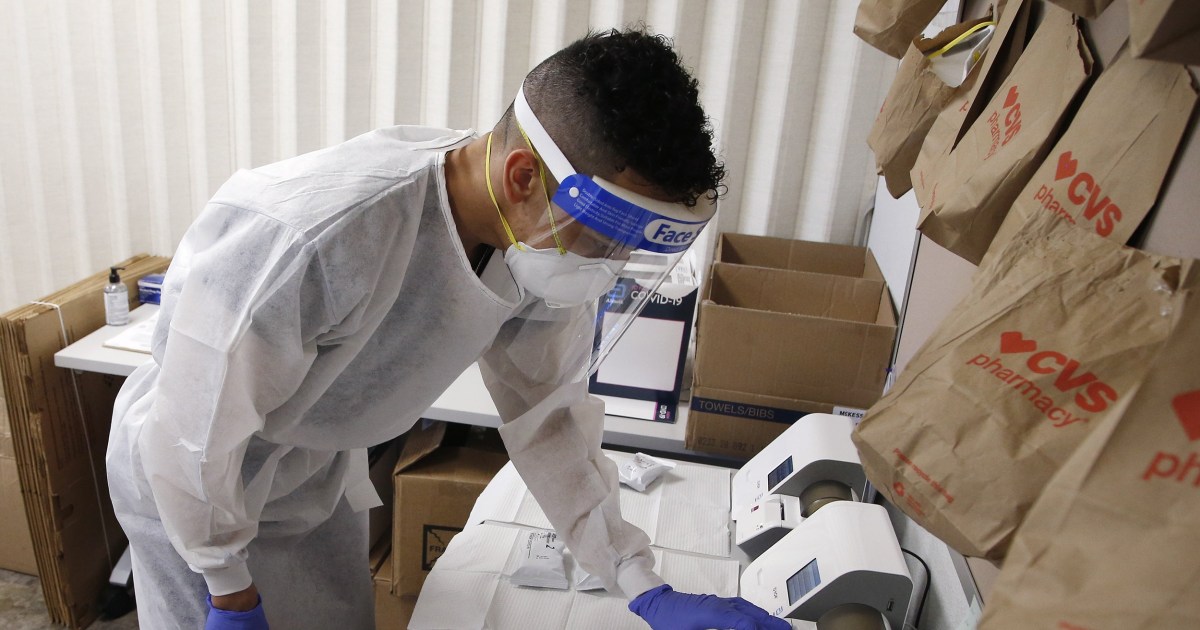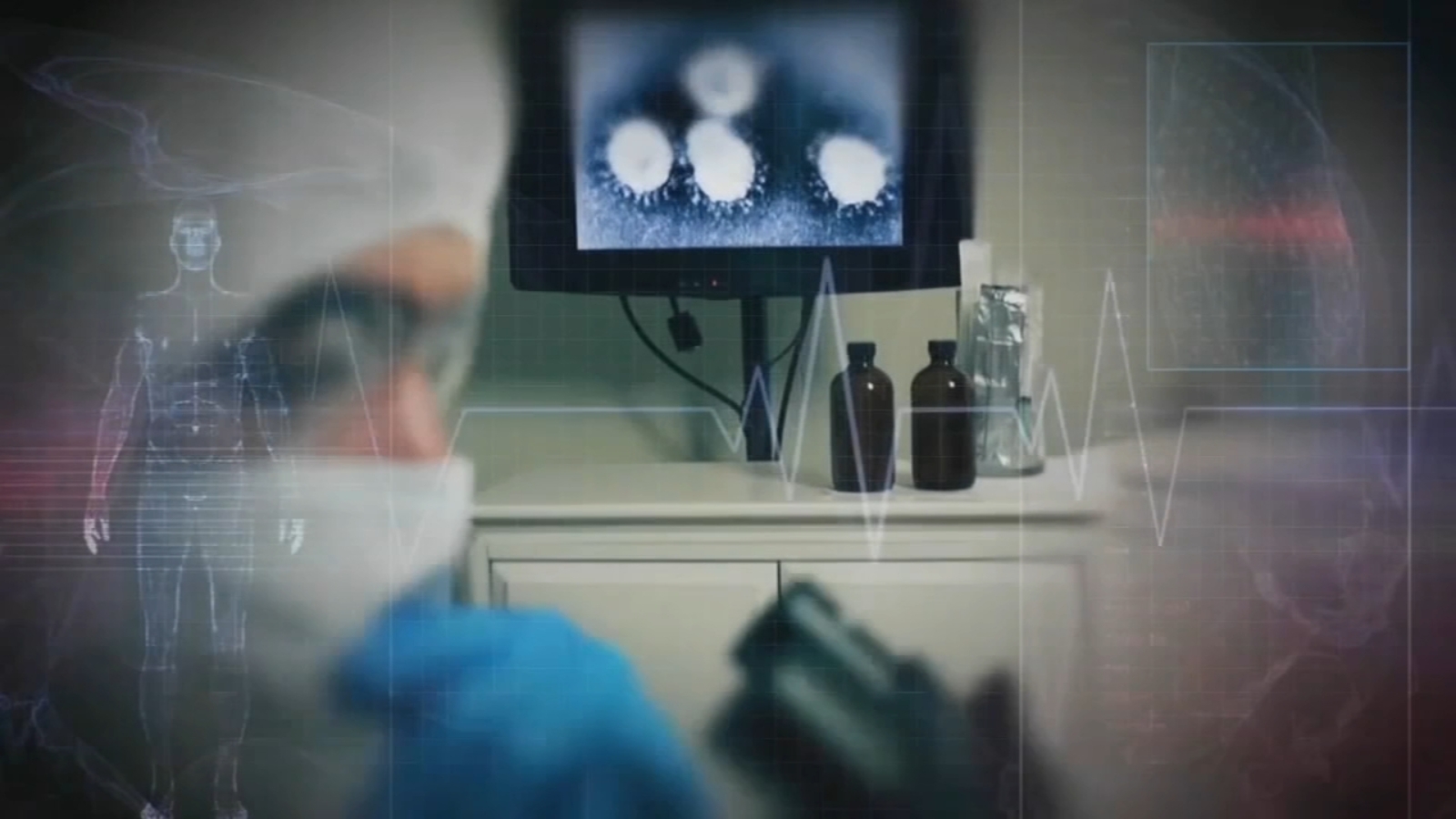View: https://www.youtube.com/watch?v=nRMGy98rBn4
33:14 min'
Coronavirus in Texas: Gov. Abbott gives COVID-19 update | KVUE
•Streamed live 101 minutes ago

KVUE
Gov. Greg Abbott is giving a live update on the state’s response to COVID-19 after hospitalizations in Texas hit a new record for 10 days in a row. As of June 22, more than 3,400 people are in Texas hospitals because of coronavirus, which is an increase of 162 patients in the past 24 hours. On June 19, COVID-19 cases in the state passed 100,000.
More on Texas:
Houston's health authority said the situation in Greater Houston is getting worse by the day.

www.khou.com
(fair use applies)
Texas reports largest daily COVID-19 increase as Greater Houston sees spike in cases
Houston's health authority said the situation in Greater Houston is getting worse by the day.
Author: Matt Dougherty
Published: 11:05 PM CDT June 20, 2020
Updated: 11:05 PM CDT June 20, 2020
HOUSTON — Texas reported the largest daily increase in COVID-19 cases Saturday since the pandemic began.
The city of Houston reported its largest daily increase in cases on Friday.
Dr. David Persse, the Houston Health Department's leading health authority, said the data show the coronavirus situation in Greater Houston is getting worse by the day.
“I think that Houstonians did a really good job, right up until now,” Persse said, “where apparently it looks like we’re not doing a very good job anymore.”
Houston reported 972 more cases of COVID-19 on Friday and 844 more cases on Saturday.
Persse said lab companies have taken time returning test results and that some of the past days’ results are from tests performed as far back as June 8.
Nonetheless, Persse said the tests are merely a sample of what is really happening.
“I guess it would be fair to assume that our numbers are much much greater than that?” KHOU 11 asked Persse.
“That’s right,” Persse said. “When you do the testing, you’re not testing everyone in the community, it’s a sample of the community. Yeah, it probably is much larger.”
Local hospital admissions shows a more timely picture of the disease in the Houston area.
The Texas Medical Center’s hospitals compile COVID-19 admissions for all of their system hospitals in Greater Houston.
There have been almost 400 new patients admitted to their hospitals with COVID-19 in the last two days.
The hospital stays for patients admitted with COVID-19 are not short.
“If you’re going to get better and go home, it’s about eight to 10 days,” Persse said. “But if you wind up in the intensive care unit, it can be 25 to 35 or longer.”
That is if the patient recovers.
According to the TMC regional hospital data on resolved cases, more than 22 percent of COVID-19 patients admitted to hospitals will die.
That is roughly one in five patients.
“Earlier on, when we were seeing predominately elderly folks getting the virus, and this is the ‘nursing home phenomenon,’" Persse said. “Obviously, they’re quite ill and they have a lot of co-morbidities.
"As we move forward and we see a younger population becoming infected and hospitalized, I’m hoping that they will be more resilient and we’ll see a lower death rate.”
Right now, patients are currently being admitted faster than they are discharged.
Persse said local hospitals are now seeing a rise in ICU admissions, which he said was predictable.
He said ICU beds are running at about 90 percent capacity across Harris County.
Data from TMC reveal ICU bed capacity could be exceeded in Greater Houston in two weeks.
“There are multiple factors all occurring at once,” Persse said. “Our concern is that too many of them are moving in the wrong direction.”
On Monday, the Houston Health Department reported 1,789 more cases, which includes a large data feed from Texas DSHS that date back from June 9.

www.khou.com
(fair use applies)
‘We are moving in the wrong direction’ | Houston sees a 'significant' increase in COVID-19 cases in June
On Monday, the Houston Health Department reported 1,789 more cases, which includes a large data feed from Texas DSHS that date back from June 9.
Author: Chloe Alexander
Published: 4:08 PM CDT June 22, 2020 | Updated: 6:27 PM CDT June 22, 2020
HOUSTON — The city of Houston is seeing a dramatic increase in the number of COVID-19 cases which has the mayor making a desperate plea for residents to mask up and social distance when around others.
During a press conference Monday afternoon, Houston Mayor Sylvester Turner reported an additional 1,789 coronavirus cases in Houston, bringing the city's total to 14,322. Turner also announced five additional deaths, bringing the city's death toll due to coronavirus to 196.
The new cases reported include the case count from Sunday and a large data feed from the Texas Department of State Health Services that date back to June 9.
"We are moving very fast and we are moving very fast in the wrong direction," said Mayor Turner. "The course that we are currently on is not in the best interest of our city or state."
Mayor Turner said the numbers being reported within the last week are some of the highest numbers he has seen in Houston.
"All of the good work we did collectively in March, April and May -- closing down conferences and conventions -- we are now engaged in activities that are wiping the success we achieved," Turner said.
Mayor Turner said the new mask order that went into effect Monday is just one of the proactive options the city is taking to help slow the spread of coronavirus. Turner said city officials are also utilizing their voices and encouraging people to do the right thing by practicing good hygiene and social distance when at stores, restaurants or any other businesses.
"At the very minimum we are asking people to put on their masks or face coverings," Turner said.
Turner went on to say that the goal of the mask order is to save lives and he said it’s a sign of respect for other people as well.
Dr. David Persse, director of the Houston Health Department, said the number of hospitalizations due to coronavirus is increasing.
Houston Fire Chief Sam Pena said within the last week the fire department has seen an increase in 911 calls from patients who have COVID-19. He says this is impacting his firefighters because those exposed to coronavirus patients must quarantine for two weeks which means public safety is being jeopardized.
"When you take 100 firefighters and police off the streets due to quarantine if affects the city," Chief Pena said.
Gov. Greg Abbott acknowledged Monday there are some alarming coronavirus trends in Texas over the last week and the virus "must be corralled."
When comparing the numbers in late May to the last five days, they've at least doubled across the board.
According to Houston Fire Chief Sam Pena, 146 HPD officers have tested positive for the virus and more than 80 firefighters are currently in quarantine.

www.khou.com
(fair use applies)
Public safety impacted after dozens of firefighters, police quarantined due to COVID-19, chief says
According to Houston Fire Chief Sam Pena, 146 HPD officers have tested positive for the virus and more than 80 firefighters are currently in quarantine.
Author: Chloe Alexander, Marcelino Benito
Published: 6:35 PM CDT June 22, 2020 | Updated: 10:35 PM CDT June 22, 2020
HOUSTON — The exponential growth in COVID-19 cases in Houston is now starting to impact public safety.
The Houston Health Department reported just under 1,800 new cases over the last two days. Mayor Sylvester Turner said the city is moving very fast in the wrong direction.
According to Houston Fire Chief Sam Pena, 146 officers with the Houston Police Department have tested positive for the virus. More than 100 are in quarantine and are unable to work right now.
"It is getting critical," said Chief Pena. "For the fire department, the numbers are even more pronounced."
Chief Pena said the Houston Fire Department has seen a 140 percent increase in firefighters needing to quarantine in the last 10 days.
On June 12, 36 firefighters were quarantined with COVID-19. As of Monday, that number stands at 88 with two admitted in the hospital, Chief Pena announced Monday afternoon during a press conference with Houston Mayor Sylvester Turner.
Even more troubling, Chief Pena said his department is seeing an increase in 911 calls coming from COVID-19 patients and if his firefighters are exposed, they have to quarantine for two weeks and monitor their symptoms. This, he says, impacts public safety.
"When you take 100 firefighters and police off the streets due to quarantine it affects the city," Chief Pena said.
Chief Pena and city leaders are pleading with the public to mask up, social distance and practice good hygiene.
"This is very real," said Houston Mayor Sylvester Turner. "This is a healthcare crisis."
The Houston Health Department said the spike in cases isn't due to one particular event. Officials said it's reopening bars and large groups gathering without masks.
Officials recommend anyone who's been in any type of huge crowd to get tested right away.
'COVID-19 is spreading at an unacceptable rate in Texas,' the governor admitted.

www.khou.com
(fair use applies)
Gov. Abbott says 'tougher actions will be required' if COVID-19 case counts continue climb
'COVID-19 is spreading at an unacceptable rate in Texas,' the governor admitted.
Author: Michelle Homer
Published: 9:19 AM CDT June 22, 2020 | Updated: 6:22 PM CDT June 22, 2020
HOUSTON — Texas Governor Greg Abbott acknowledged Monday there are some alarming coronavirus trends in Texas over the last week and the virus "must be corralled."
"COVID-19 is spreading at an unacceptable rate in Texas," the governor said.
Texas reported its largest daily increase in COVID-19 cases since the pandemic began on Saturday. Hospitalization numbers are up 126% statewide since Memorial Day.
When comparing the numbers in late May to the last five days, they've at least doubled across the board.
Cases in Texas are up from about 1,500 a day to more than 3,500. Hospitalizations have jumped from about 1,600 a day to more than 3,200. The percentage of people testing positive is up to 9 percent, compared to 4.5 percent in late May.
"If that spike continues, further action will be necessary," Abbott said. "We don't have to choose between jobs and health We can have both. We can protect Texans lives while also restoring their livelihoods."
Abbott said closing down Texas again will be the last resort but it could happen.
"If we do not start wearing masks to slow the spread of COVID-19, it could result in [businesses] actually having to close back down," Gov. Abbott said. "Our goal is to keep businesses open, to keep society engaged, and one of the most effective tools that we can do that is by people wearing masks."
The mask debate has turned political in Texas and other states.
"I know that some people feel that wearing a mask is inconvenient, or that it is, like, an infringement of freedom," said Gov. Abbott. "But I also know that wearing a mask will help us to keep Texas open."
.





